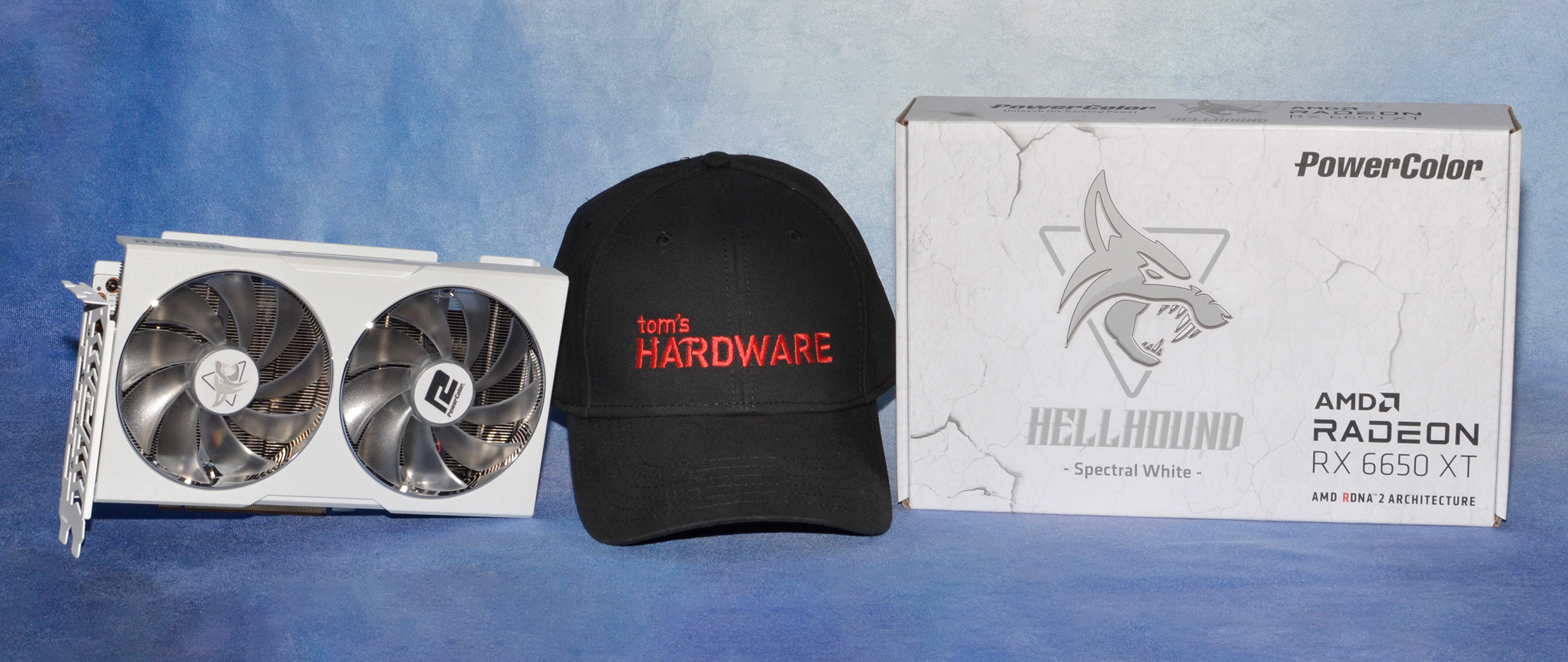Why you can trust Tom's Hardware
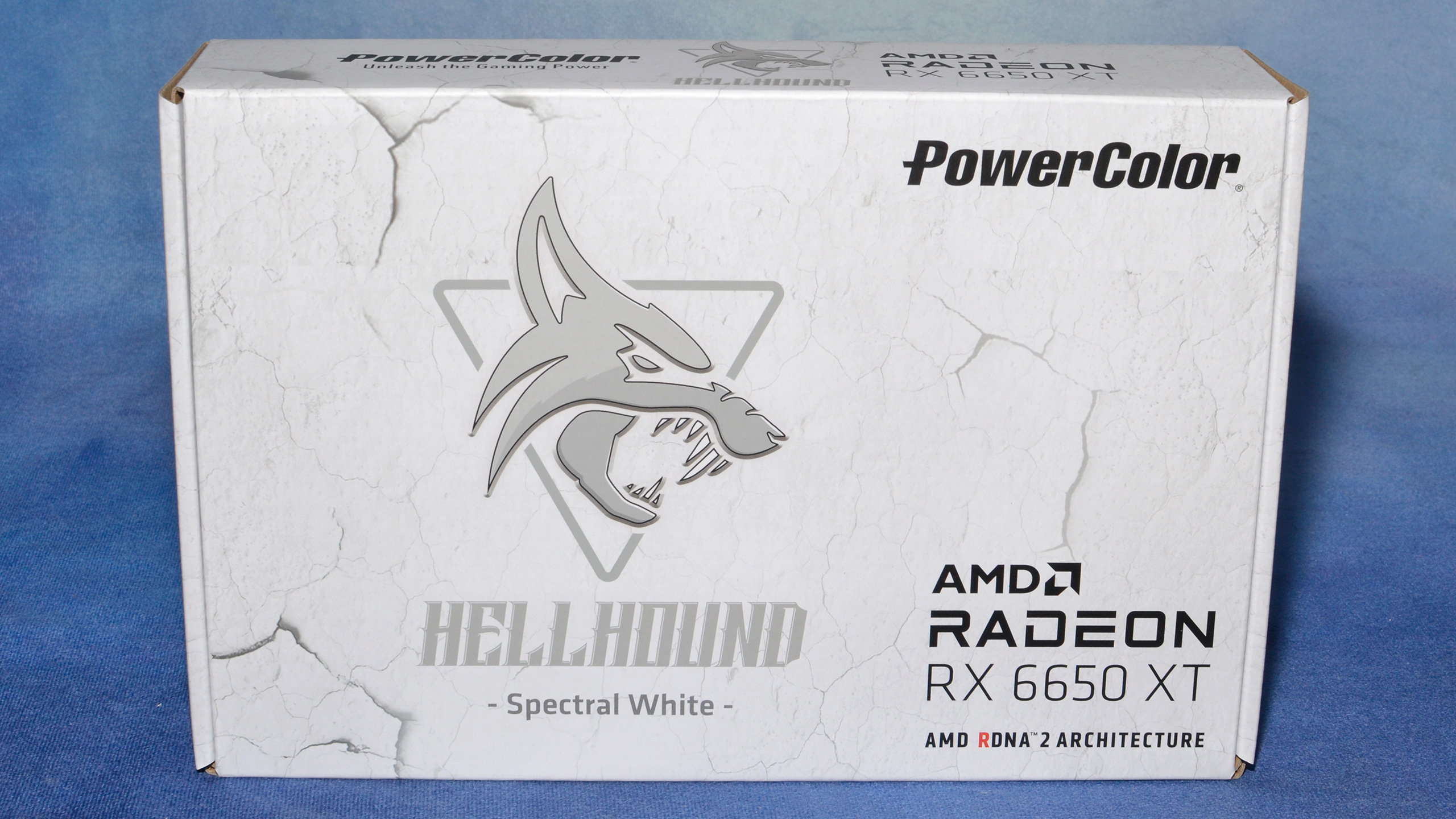
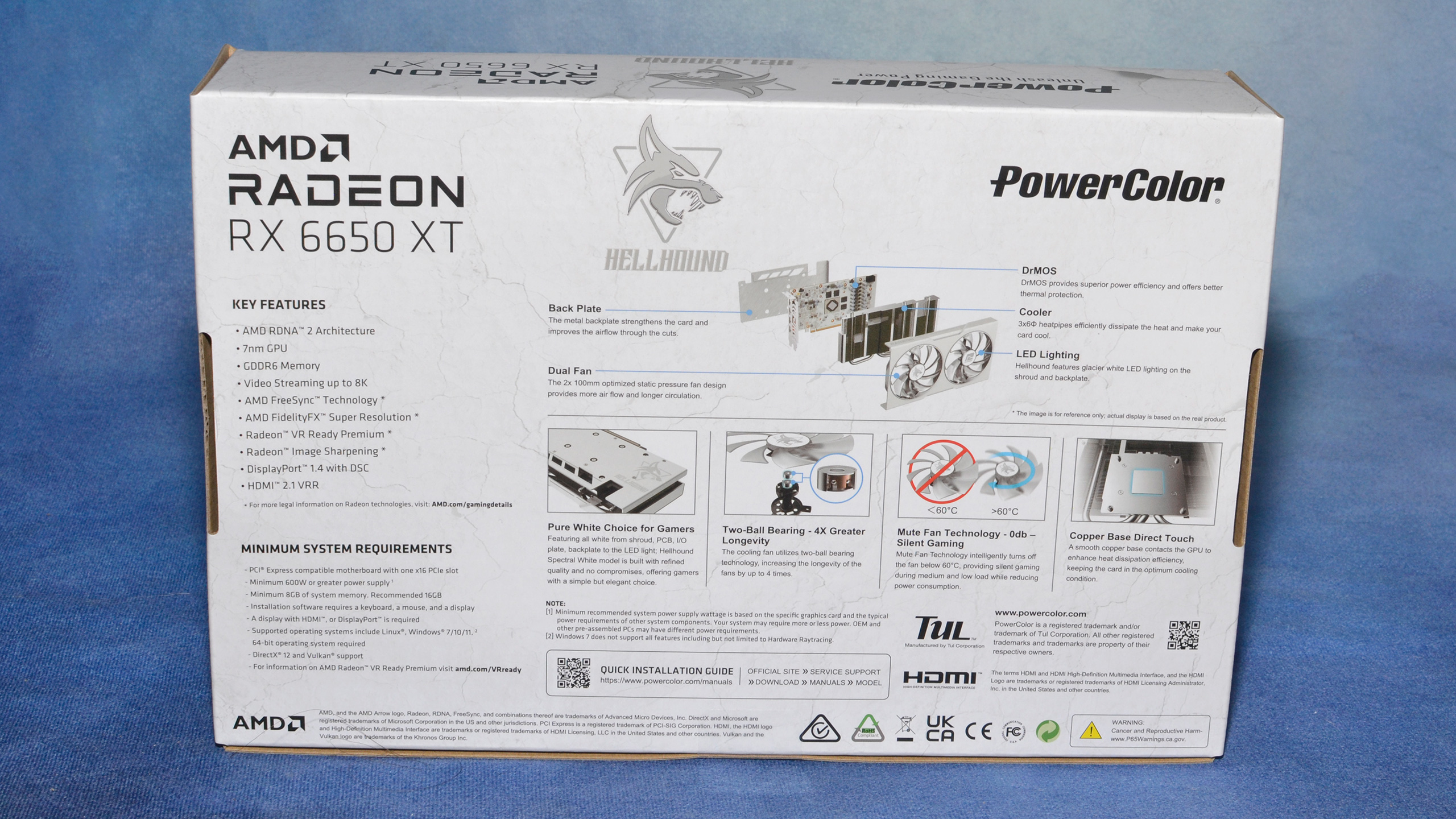
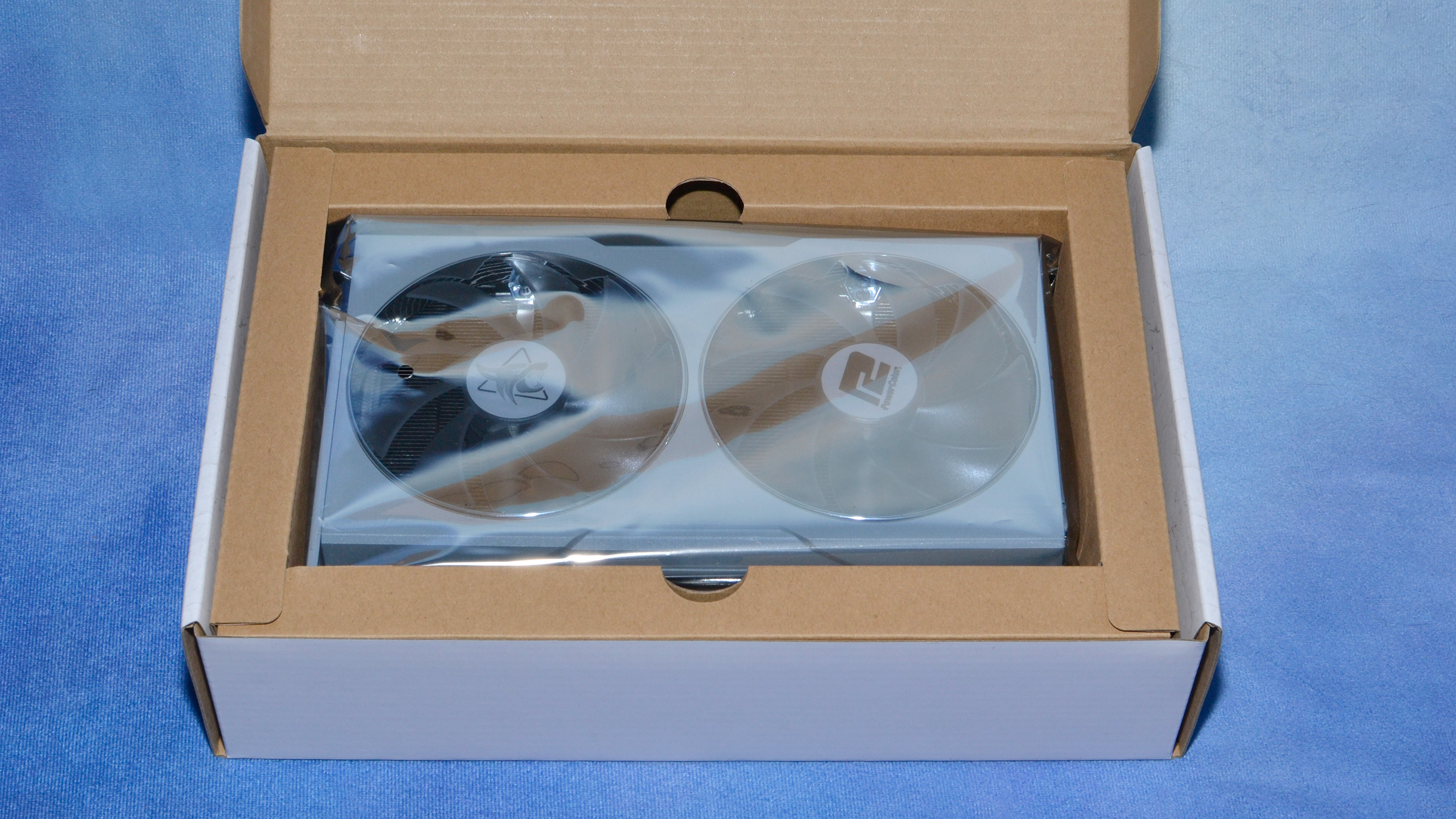
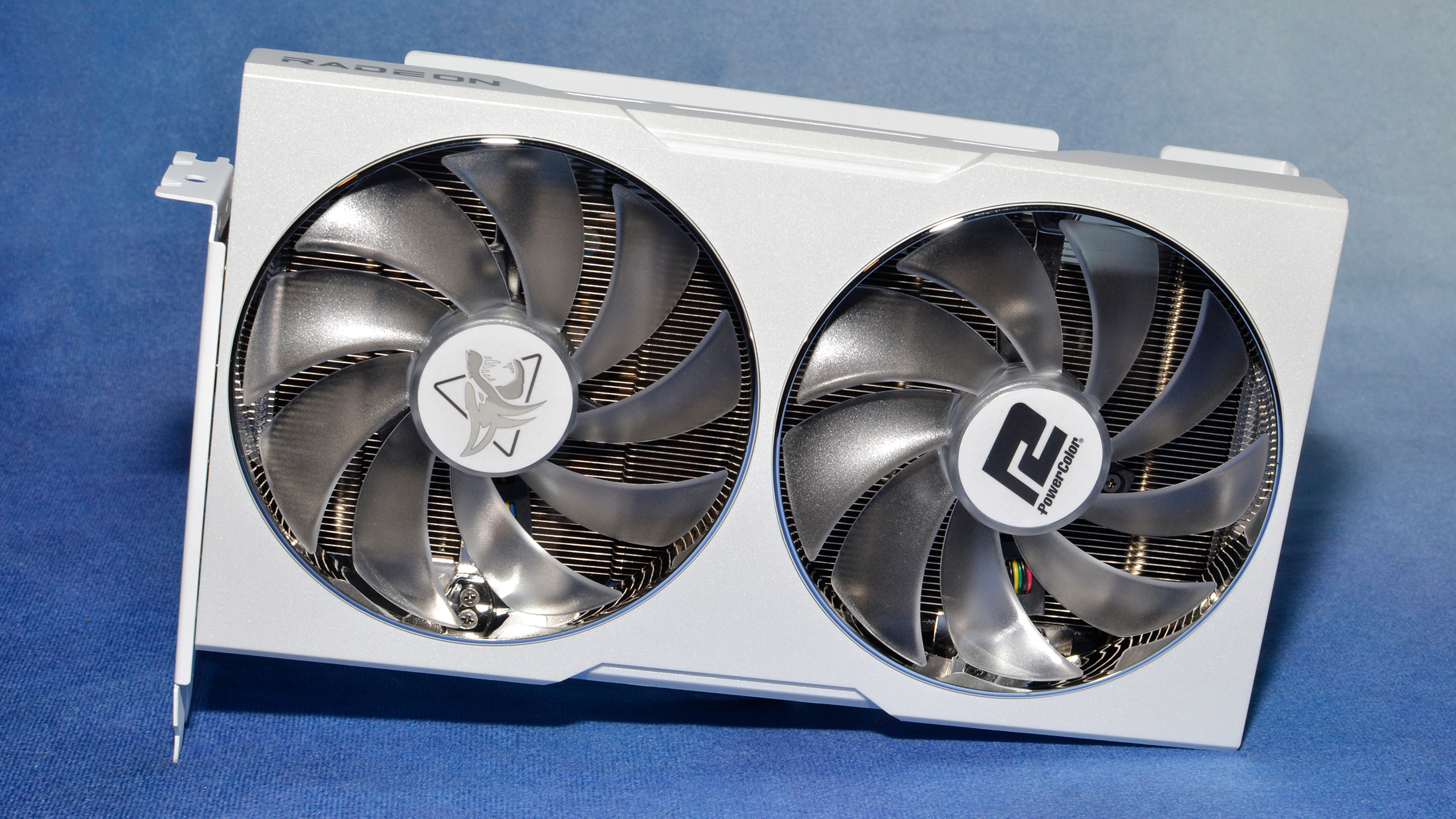
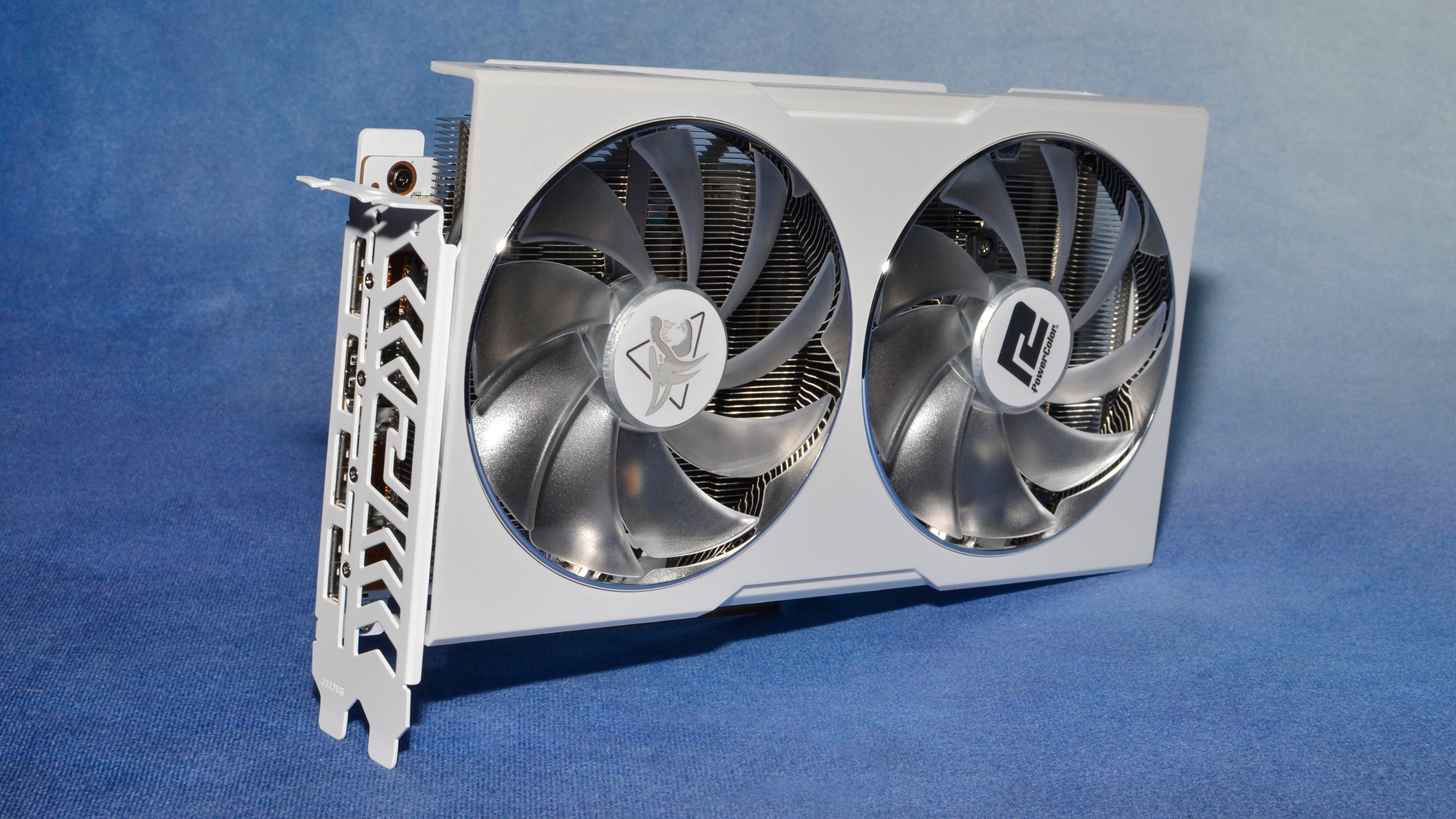
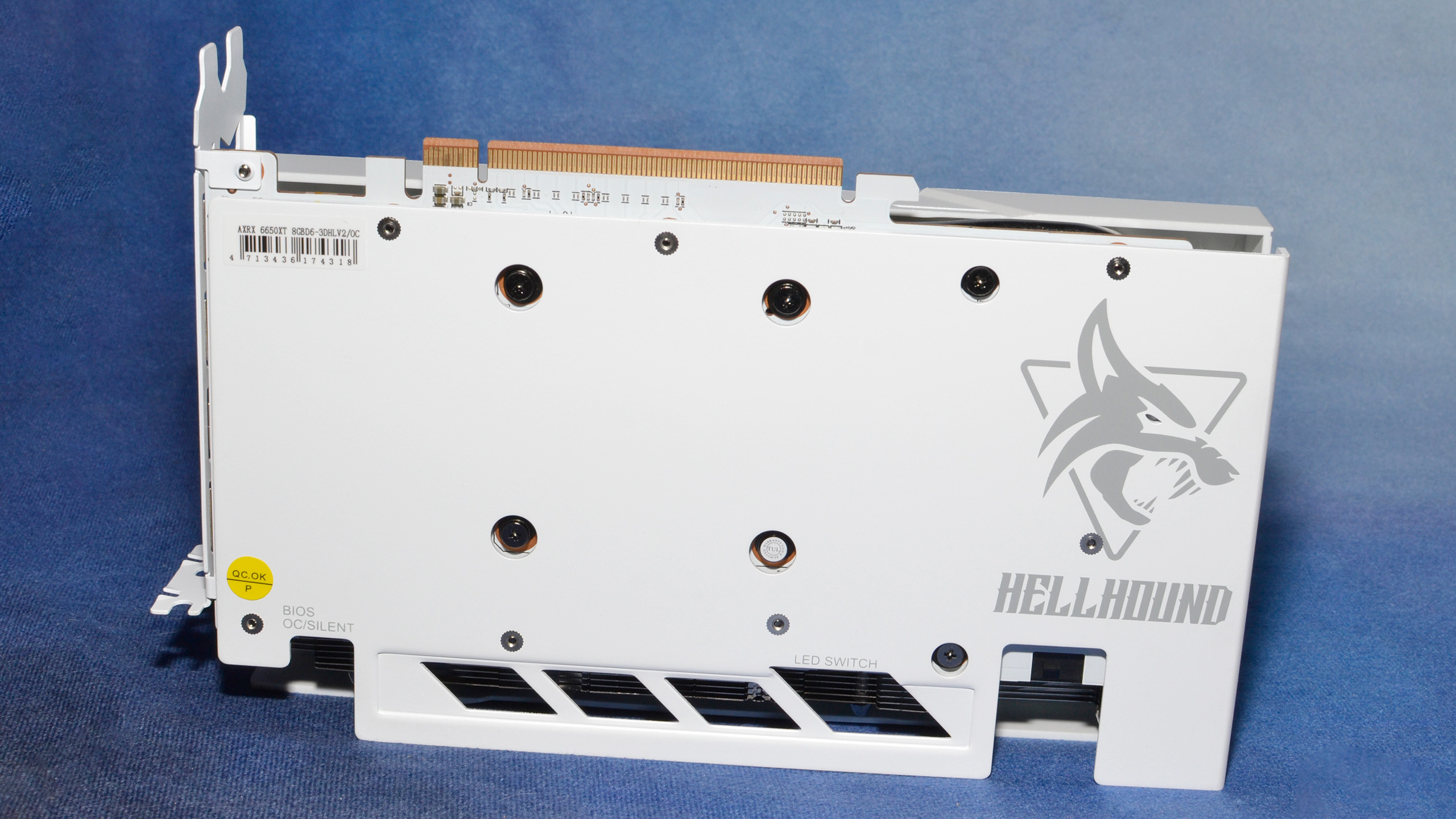
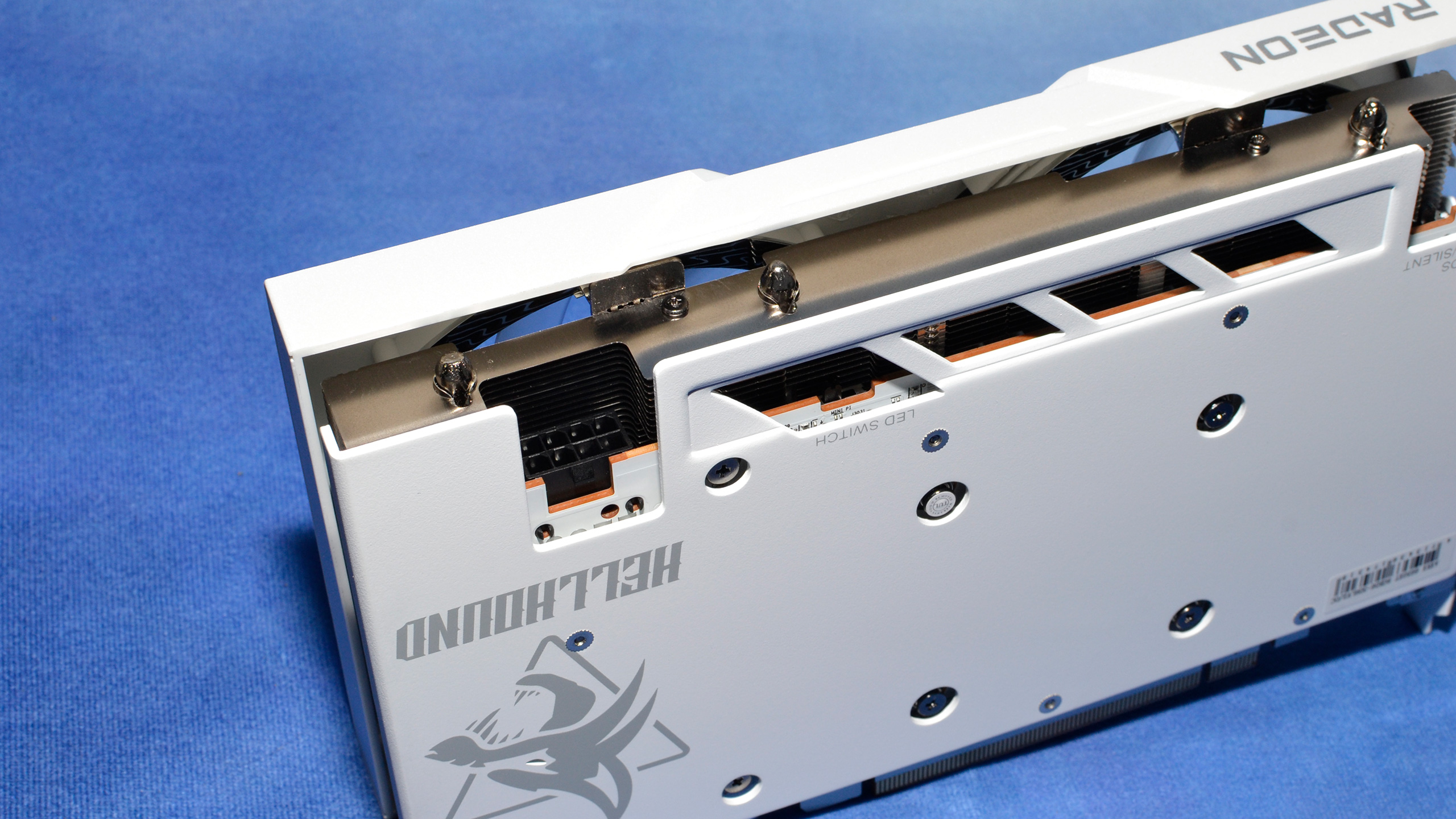
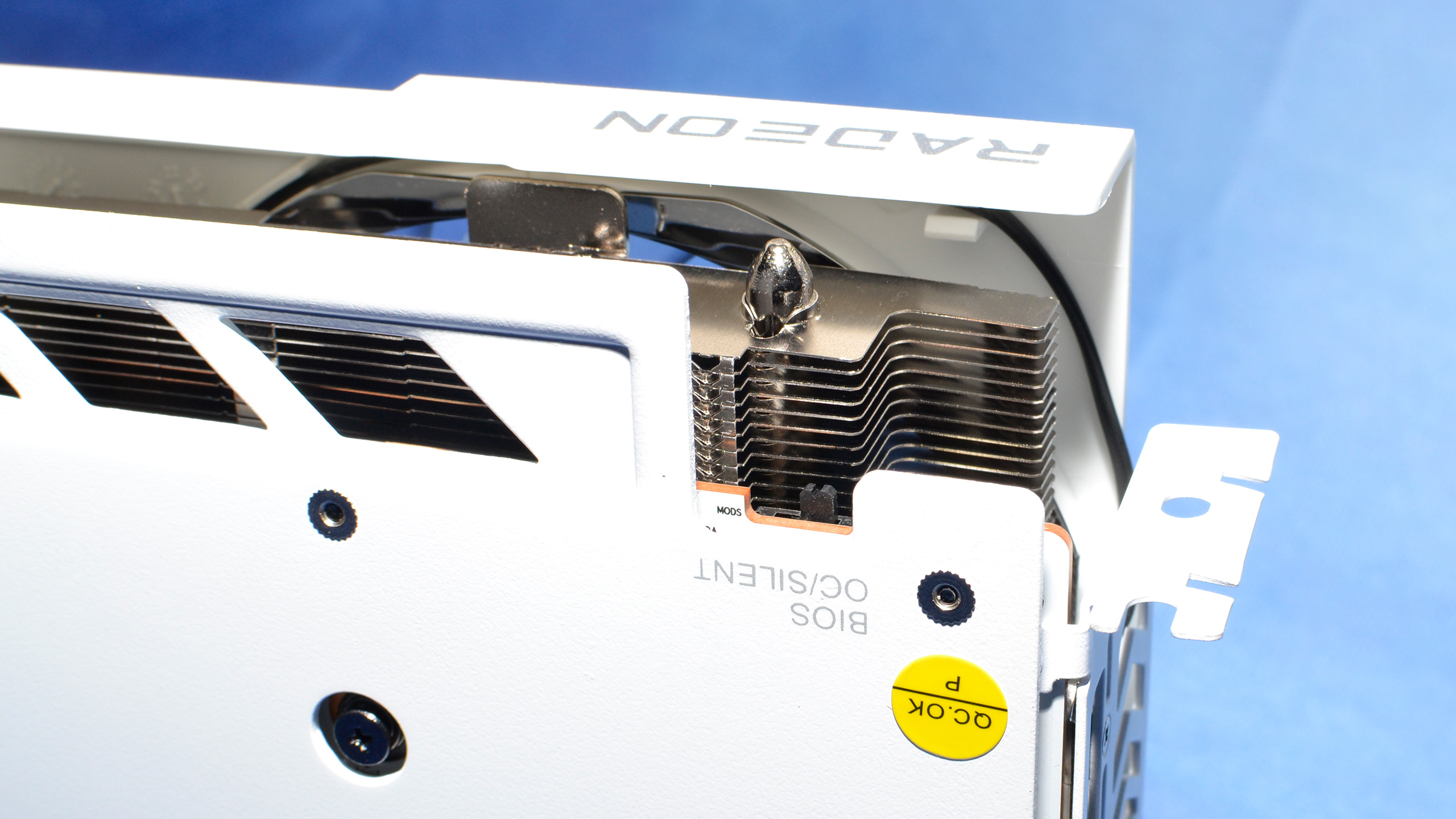
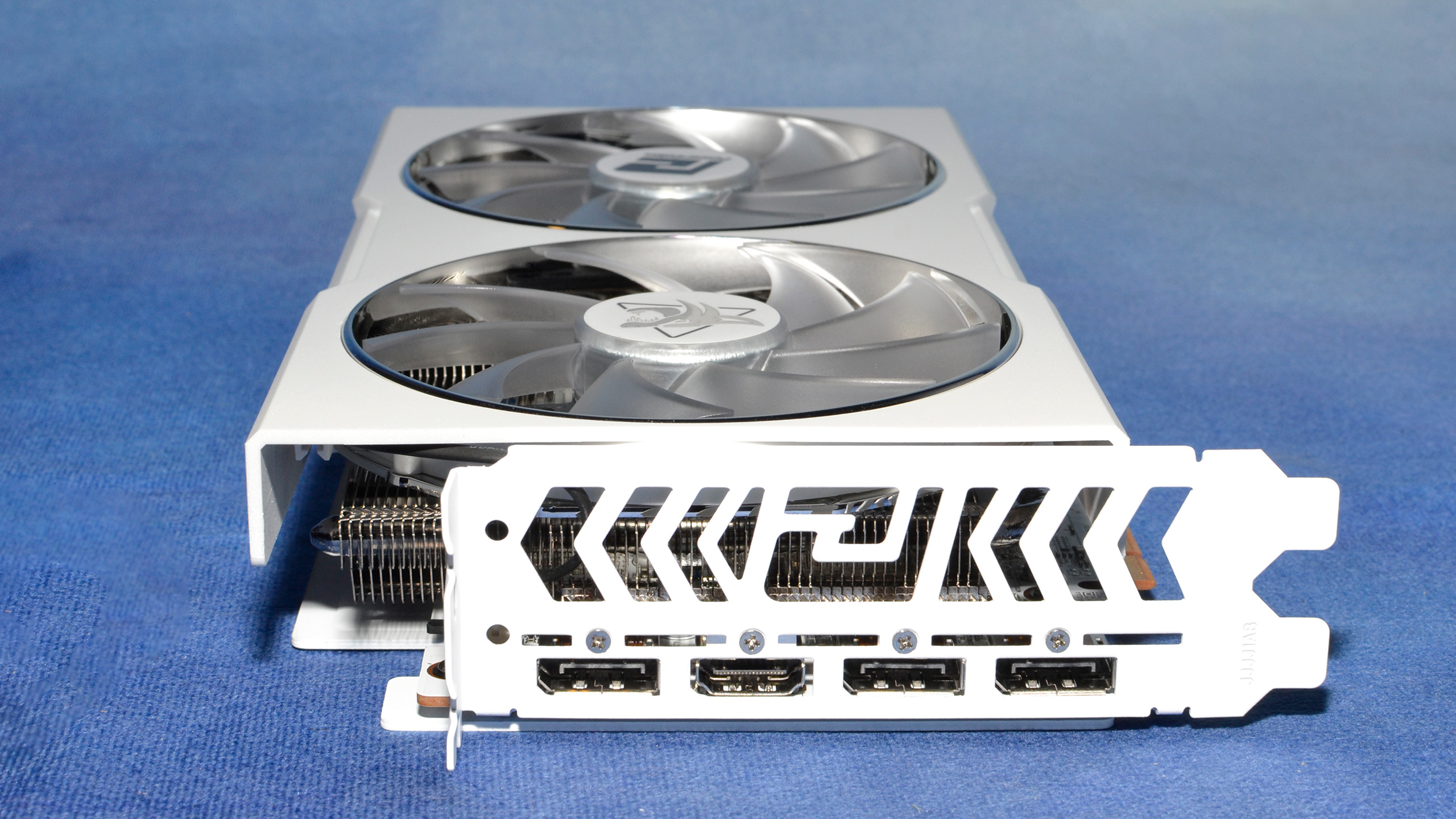
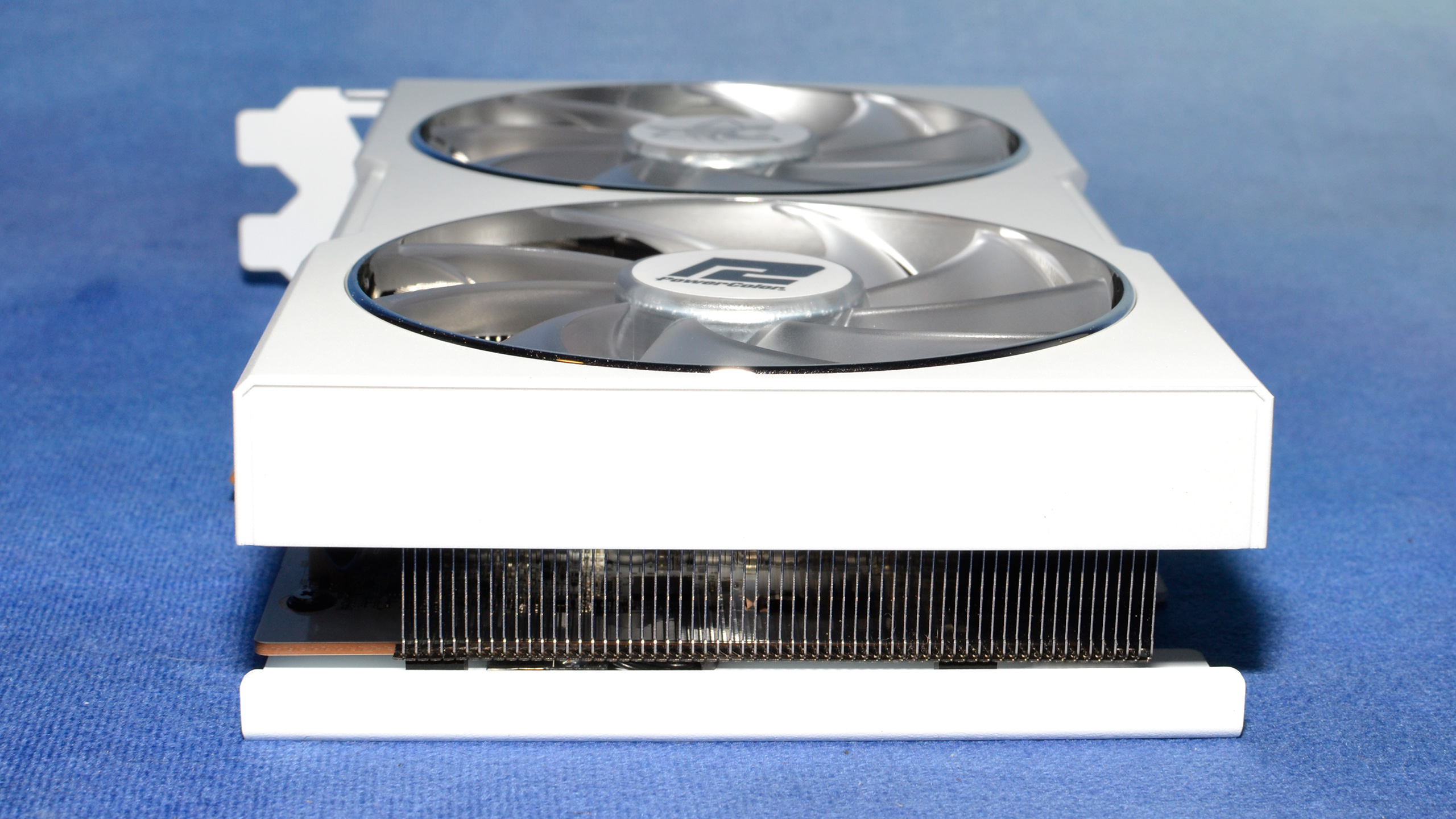
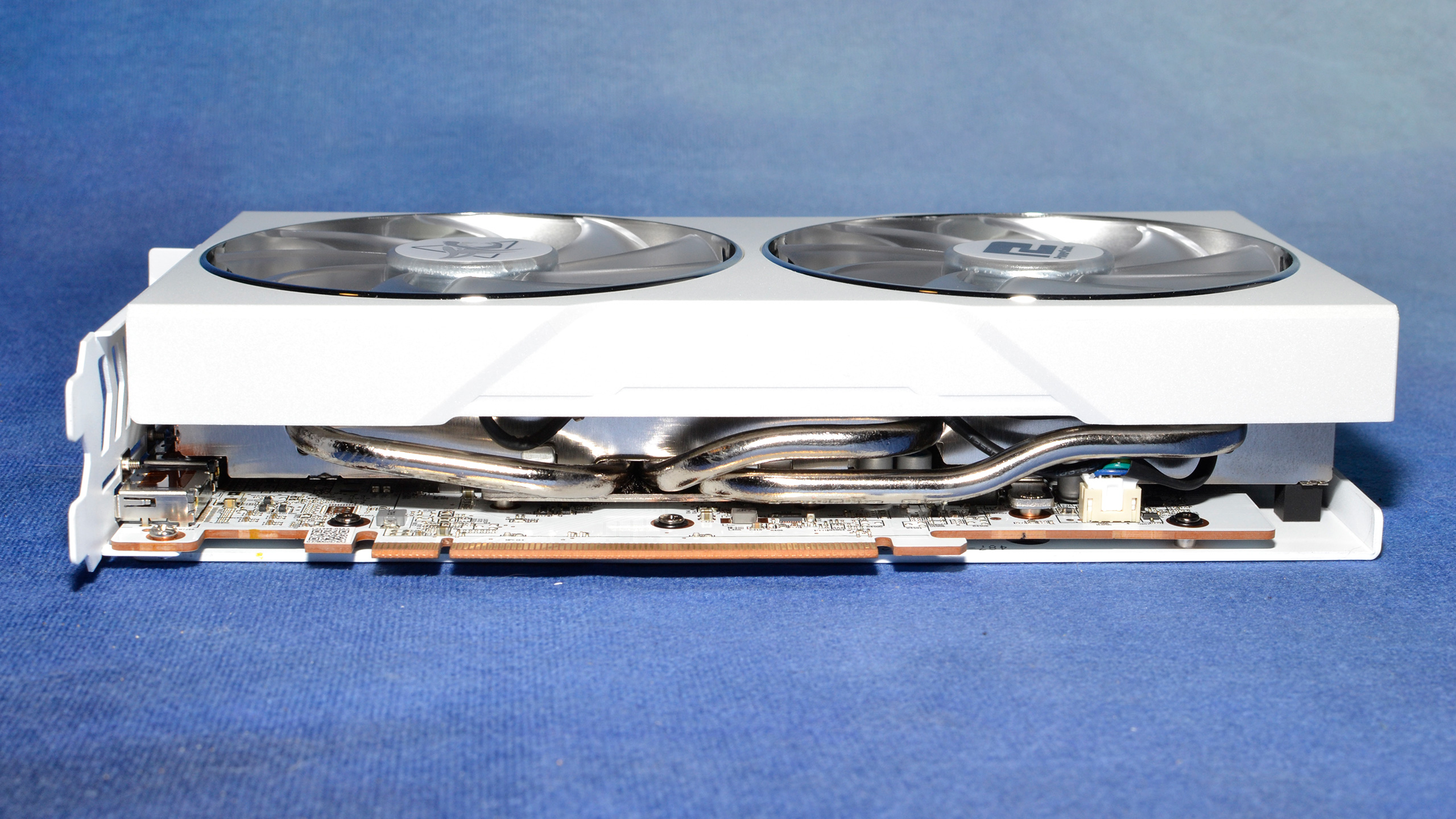
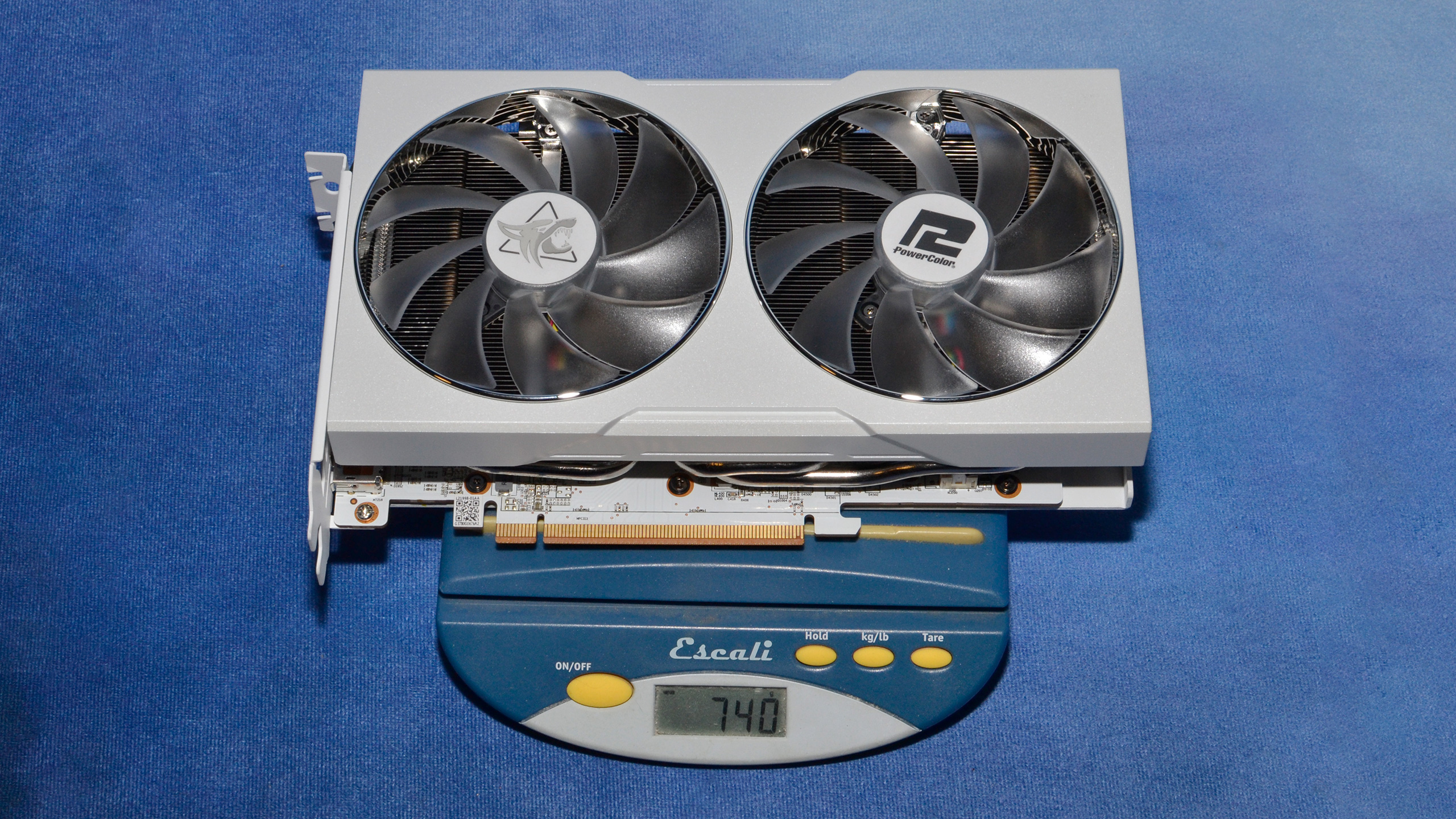
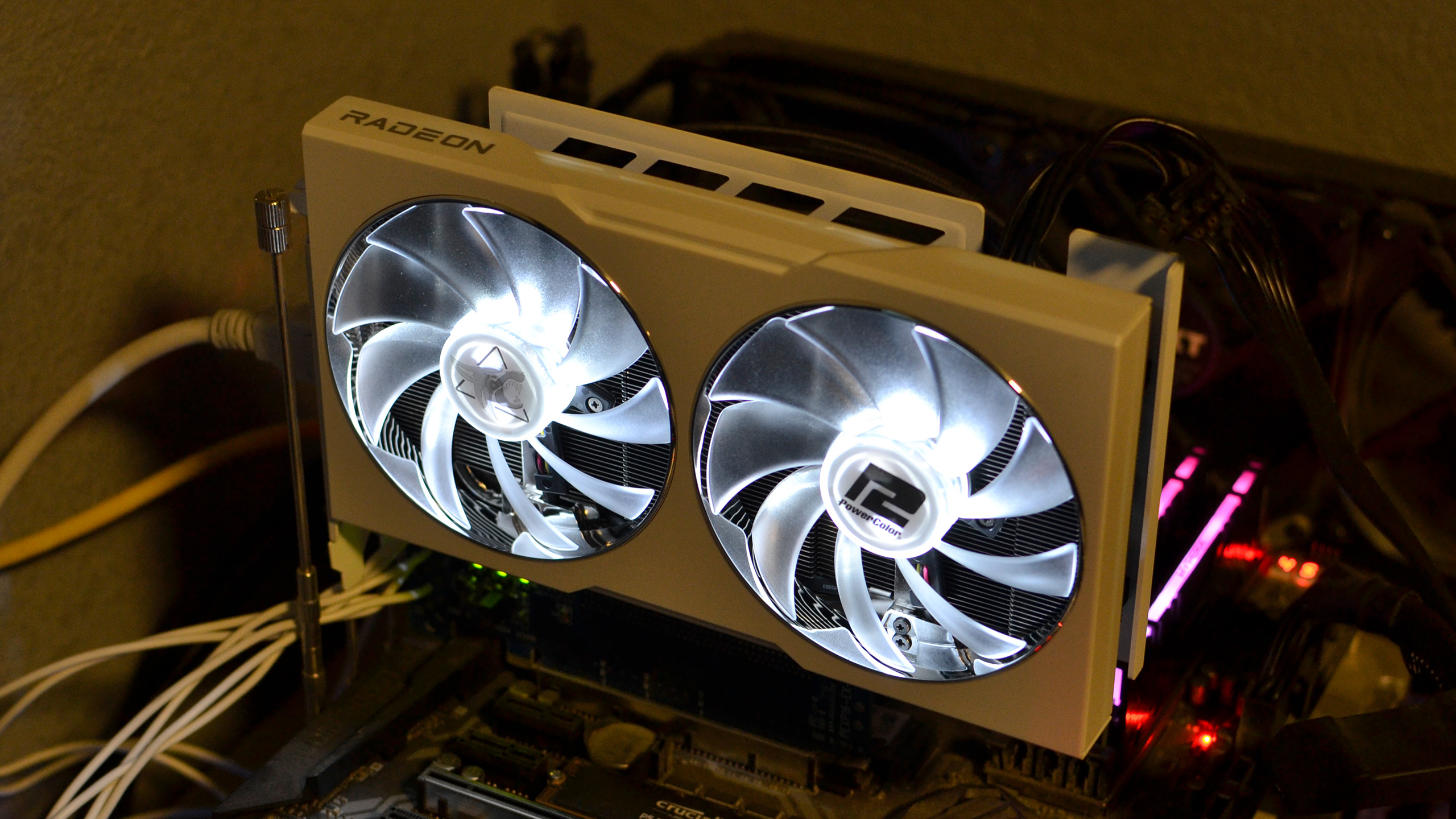
If you're looking for a change of pace from the traditional black, silver, and/or gray color schemes that have graced graphics cards since time immemorial, you might enjoy the Spectral White motif on PowerColor's card. It won't make your PC run any faster, but it could go nicely with a white case. However, fans of RGB lighting will be disappointed as the card has static white LEDs on the fans. Sorry, no technicolor light shows from this GPU.
The PowerColor RX 6650 XT is relatively lightweight compared to higher-end graphics cards. It measures 220x132x45mm and only weighs 740g. That's still heavier than the Sapphire RX 6600 XT Pulse but nowhere near the size of the triple-fan ASRock RX 6600 XT Phantom Gaming. There will, of course, be other RX 6650 XT designs with triple fans, but the official TBP of 180W means we shouldn't need massive coolers — unless you want a quieter running card.
Speaking of which, there's a switch to toggle between OC mode and Silent mode on the Hellhound. Normally, such switches apply different clock speeds and other settings, but as far as we can tell from testing, this mostly impacts the temperature and fan speed targets. Nevertheless, performance remained effectively unchanged, so if you don't mind a slightly hotter running GPU, give the silent mode a shot.
While the white color scheme might be aesthetically pleasing to some users, the Hellhound design is otherwise pretty boxy, with right angles on most edges and no other sculpting of the shroud. That's not necessarily bad, just a bit simplistic compared to something like an Asus ROG Strix or MSI Gaming X design. Also, note that the fans don't have an integrated rim, so they'll generally have to spin faster to provide the same cooling performance as better fans.
There's a reflective rim surrounding the fans, which serves the same goal of directing airflow. The mirror finish looks pretty cool and helps spread the LED lighting. PowerColor also gets a few bonus points for orienting the heatsink fins perpendicular to the IO plate, which means at least some of the heat from the card will exit out the back of the case — probably not much, but it's better than nothing.
A single 8-pin PEG connector provides power for the card, and a metal backplate protects surface-mounted devices. As we've seen with so many other cards, you get the typical three DisplayPort 1.4 outputs and a single HDMI 2.1 connection, which should suffice for most people.
- MORE: Best Graphics Cards
- MORE: GPU Benchmarks and Hierarchy
- MORE: All Graphics Content
Get Tom's Hardware's best news and in-depth reviews, straight to your inbox.
Current page: PowerColor Radeon RX 6650 XT Hellhound Spectral White
Prev Page AMD Radeon RX 6650 XT Specifications Next Page Test Setup for Radeon RX 6950 XT
Jarred Walton is a senior editor at Tom's Hardware focusing on everything GPU. He has been working as a tech journalist since 2004, writing for AnandTech, Maximum PC, and PC Gamer. From the first S3 Virge '3D decelerators' to today's GPUs, Jarred keeps up with all the latest graphics trends and is the one to ask about game performance.
-
kudorgyozo I just registered (actually just reset the password) to say that I cannot believe you added "No RGB lighting, only white LEDs " as a CON. You're welcomeReply -
DrLaf23HereaboutLED Reply
I just registered (actually created my account) to congratulate you for pointing out that RGB lighting shouldn't be pro nor con.kudorgyozo said:I just registered (actually just reset the password) to say that I cannot believe you added "No RGB lighting, only white LEDs " as a CON. You're welcome
